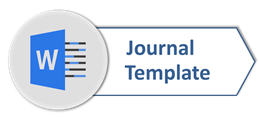The Organization of Words in Mental Lexicon: Evidence from Word Association Test
Abstract
Both in psychology and linguistics studies, memory is one of the core of interests amongst researchers. In linguistics, memory is the place where language processes consisting of language perception, storage, and access of words take place. Words, in memory, are stored in complex, clear, well-organized, and ordered networks called nodes, which can be represented by World Wide Web. This word organization in psycholinguistics is referred to mental lexicon. This study aims to investigate what kind of nodes representation stored in mental lexicon of foreign language learners. Word Association Test (WAT), the well-known study method in both psychology and linguistics studies, is employed by using English Swadesh word list as the stimulus to elicit the lexical relation amongst words. The basic principle of the test is giving a stimulus to respondents and asking them to give the very first word coming out of their mind. Respondents are undergraduate students of English Literature a university in Indonesia. Findings of this research support the previous findings stating that non-native speakers tend to make syntagmatic relation, which is mostly dominated by collocation association. Interestingly, the finding also shows that the words network in mental lexicon involves a dynamic development based on experience and perception of the respondents.
Key Words: lexical relation, mental lexicon, word associationFull Text:
PDFReferences
Aichison, J. 1994. Words in the Mind. Oxford: Blackwell.
Bowern, C. 2008. Linguistics Fieldwork: A Practical Guide. London: Palgrave Macmillan
Carroll, David W. 2008. Psychology of Language, 5th ed. Thomson USA: Wadsworth.
Cowles, H. Wind. 2011. Psycholinguistics 101. New York: Springer Publishing Company.
Cruse, A. 2004. Meaning in Language: An Introduction to Semantics and Pragmatics, 2nd, ed. Oxford: Oxford University Press.
Fitzpatrick, T. 2007. Word association patterns: unpacking the assumptions. International Journal of Applied Linguistics 17/3, 319-331.
Meara, P. 1982 ‘Word Associations in a Foreign Language: A Report on the Birkbeck Vocabulary Project.’ Nottingham Linguistic Circular, 11(2): 29-37.
Menenti, Laura. 2006. ‘L2-L1 Word Association in Bilinguals: Direct Evidence’. Nijmegen CNS, Vol.1.
McCarthy, M. 1990. Vocabulary. Oxford: Oxford University Press.
Peppard, J. 2007. ‘Exploring the Relationship between Word-Association and Learners’ Lexical Development’. Center for English Language Studies: University of Birmingham.
Riemer, N. 2005. Introducing Semantics. Cambridge: Cambridge University Press
Roux, P. W. 2013. "Words in the Mind: Exploring the relationship between word association and lexical development." Polyglossia, 24(80-91).
Schwartz, Ana I. & Judith F. Kroll. 2006. ‘Language Processing in Bilingual Speakers’, in Matthew J. Traxler & Morton A. Gernsbacher, ed.). Handbook of Psycholinguistics 2nd ed. London: Elsevier
Sheng, McGregor, and Marian 2006. ‘Lexical–Semantic Organization in Bilingual Children: Evidence From a Repeated Word Association Task ‘. Journal of Speech, Language, and 572 Hearing Research, American Speech-Language-Hearing Association, Vol. 49, 572–587.
Steinberg, D. 2002, Introduction to Psychology of Language, Translated by Arsalan Golfam, Tehran: Samt Pub.
Wolter, B. 2002. ‘Assessing Proficiency Through Word Associations: Is There Still Hope? System, Vol. 30, pp.315-329.
DOI: https://doi.org/10.33365/ts.v16i1.130
Refbacks
- There are currently no refbacks.
Copyright (c) 2018 TEKNOSASTIK
Teknosastik: Jurnal Bahasa dan Sastra
Publisher: Universitas Teknokrat Indonesia
Address: Zainal Abidin Pagaralam Street 9-11, Bandar Lampung, Indonesia
Website: https://ejurnal.teknokrat.ac.id/index.php/teknosastik/index

Creative Commons Attribution-ShareAlike 4.0 International License






